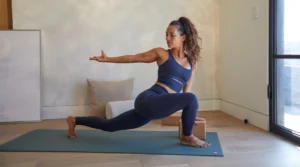Mindful breathing is more than just taking a deep breath—it’s a powerful practice that can reshape your mental, emotional, and physical health. Rooted in ancient traditions like yoga and meditation, it’s now backed by science as a tool to reduce stress, boost focus, and enhance overall wellbeing. Whether you’re navigating a hectic workday or seeking calm in a chaotic world, mindful breathing offers a simple, accessible way to reconnect with yourself. In this article, we’ll explore how this practice works, its benefits, and how you can incorporate it into your daily life for lasting transformation.
What Is Mindful Breathing?
Mindful breathing is the intentional act of focusing on your breath to anchor your mind in the present moment. It involves observing the rhythm, depth, and sensation of each inhale and exhale without judgment. This practice, often a cornerstone of mindfulness meditation, helps you tune out distractions and cultivate a sense of inner peace.
Think of it like hitting the pause button on life’s chaos. By paying attention to your breath, you create a space to process emotions, reduce tension, and regain clarity. It’s not about forcing deep breaths but noticing the natural flow of air, which can be profoundly grounding.
The Science Behind Mindful Breathing
Research shows that mindful breathing activates the parasympathetic nervous system, which promotes relaxation and counters the fight-or-flight response. Studies from institutions like Harvard Medical School have found that it lowers cortisol levels, reduces heart rate, and improves oxygen flow to the brain. This can lead to better emotional regulation and cognitive function.
It’s like giving your brain a mini-vacation. When you focus on your breath, you’re essentially telling your nervous system, “Hey, it’s okay to chill.” This shift can make a huge difference in how you handle stress, anxiety, or even physical pain.
The Benefits of Mindful Breathing for Wellbeing
Mindful breathing isn’t just a feel-good exercise—it’s a science-backed tool with measurable benefits. From reducing stress to improving sleep, its impact spans mental, emotional, and physical health. Let’s dive into the key ways it can enhance your wellbeing.
Stress Reduction and Emotional Balance
Chronic stress can wreak havoc on your body and mind, but mindful breathing acts like a natural stress-buster. A 2018 study in Frontiers in Immunology found that mindfulness practices, including breathwork, reduce inflammation markers linked to stress. By slowing your breathing, you signal your brain to calm down, which can ease anxiety and improve mood.
Imagine you’re stuck in traffic, heart racing, and frustration building. A few minutes of mindful breathing can help you feel grounded, like pressing a reset button on your emotions. It’s a small act with big rewards.
Improved Focus and Mental Clarity
In a world full of notifications and to-do lists, staying focused is a challenge. Mindful breathing sharpens your attention by training your brain to stay present. A 2017 study in The Journal of Neuroscience showed that breath-focused meditation enhances cognitive performance, especially in tasks requiring sustained attention.
It’s like clearing the fog from a windshield. When I started practicing mindful breathing during work breaks, I noticed I could tackle complex tasks without feeling overwhelmed. It’s a game-changer for productivity.
Better Sleep Quality
Struggling to fall asleep? Mindful breathing can help. By calming the nervous system, it prepares your body for rest. A 2020 study in Sleep Medicine Reviews found that mindfulness-based practices improve sleep quality and reduce insomnia symptoms.
Picture this: instead of tossing and turning, you spend five minutes focusing on slow, deep breaths. Your mind quiets, and you drift off more easily. It’s like a lullaby for your nervous system.
Physical Health Benefits
Mindful breathing doesn’t just soothe the mind—it supports the body too. It can lower blood pressure, improve lung function, and even aid digestion by reducing stress-related tension. According to the American Heart Association, mindfulness practices are linked to better cardiovascular health.
It’s like giving your body a tune-up. When you breathe mindfully, you’re oxygenating your cells and easing physical strain, which can make you feel more energized and resilient.
How to Practice Mindful Breathing
Getting started with mindful breathing is easier than you might think. You don’t need fancy equipment or a meditation guru—just a few minutes and a willingness to try. Here’s a step-by-step guide to help you begin.
Basic Mindful Breathing Technique
Find a quiet spot, sit comfortably, and close your eyes if it feels right. Focus on your breath as it flows in and out. Notice the sensation of air moving through your nose, chest, or belly. If your mind wanders, gently bring it back to your breath.
It’s like training a puppy to sit—your mind will wander, and that’s okay. The key is to keep returning to the breath without frustration. Start with just 2–3 minutes and build from there.
Step-by-Step Guide
- Find a comfortable position: Sit or lie down in a quiet space.
- Set a timer: Start with 2–5 minutes to keep it manageable.
- Focus on your breath: Notice the inhale and exhale without changing it.
- Acknowledge distractions: If thoughts pop up, label them “thinking” and return to your breath.
- Be patient: It’s normal for your mind to wander; gently guide it back.
This simple practice can fit into even the busiest schedules. Try it during a coffee break or while waiting for a meeting to start.
Advanced Techniques for Deeper Practice
Once you’re comfortable with basic mindful breathing, you can explore advanced techniques like diaphragmatic breathing or the 4-7-8 method. These involve deeper, controlled breaths to enhance relaxation or focus.
Diaphragmatic breathing, for example, engages your belly to maximize oxygen intake. It’s like filling a balloon in your abdomen—slow, steady, and expansive. These methods can deepen your practice and amplify benefits.
Comparison of Breathing Techniques
| Technique | Description | Best For |
|---|---|---|
| Basic Mindful Breathing | Focus on natural breath rhythm | Beginners, daily stress relief |
| Diaphragmatic Breathing | Deep belly breathing for maximum oxygen | Anxiety, physical relaxation |
| 4-7-8 Breathing | Inhale for 4, hold for 7, exhale for 8 | Sleep, intense stress |
| Box Breathing | Equal counts for inhale, hold, exhale, hold | Focus, performance under pressure |
Each technique offers unique benefits, so experiment to find what resonates with you.
Integrating Mindful Breathing into Daily Life
The beauty of mindful breathing is its flexibility—you can practice it anywhere, anytime. Whether you’re at work, home, or even in a crowded subway, it’s a tool you always carry with you. Here are practical ways to weave it into your routine.
Morning Routine for a Calm Start
Starting your day with mindful breathing sets a positive tone. Spend 5 minutes focusing on your breath before checking your phone. It’s like giving your mind a warm-up before the day’s marathon.
I began doing this a year ago, and it transformed my mornings. Instead of rushing into emails, I felt centered and ready to tackle the day. It’s a small habit with a big payoff.
During Work or Stressful Moments
Work deadlines or tense meetings can spike stress levels. Try a quick 1-minute mindful breathing break. Inhale deeply, exhale slowly, and notice the tension melt away. It’s like a mental reset button.
I once used this during a high-stakes presentation. A few breaths helped me stay calm and confident, even when the projector failed. It’s a lifesaver in high-pressure moments.
Before Bed for Better Sleep
Mindful breathing before bed can ease you into sleep. Try the 4-7-8 technique: inhale for 4 seconds, hold for 7, and exhale for 8. It’s like a gentle nudge toward dreamland.
This became my go-to when insomnia hit. After a week, I noticed I was falling asleep faster and waking up refreshed. It’s now a non-negotiable part of my nighttime routine.
Pros and Cons of Mindful Breathing
Like any practice, mindful breathing has its strengths and limitations. Understanding both can help you approach it realistically.
Pros
- Accessible: Requires no equipment or special training.
- Versatile: Can be done anywhere, anytime.
- Science-backed: Proven to reduce stress, improve focus, and enhance health.
- Free: No cost to start or maintain the practice.
Cons
- Takes practice: Beginners may find it hard to stay focused.
- Not a cure-all: May not address severe mental health issues alone.
- Time commitment: Requires consistency for long-term benefits.
Despite these challenges, the low barrier to entry makes mindful breathing worth trying for most people.
People Also Ask (PAA)
Here are answers to common questions about mindful breathing, drawn from real Google searches.
What is the difference between mindfulness and mindful breathing?
Mindfulness is a broader practice of being present in the moment, while mindful breathing is a specific technique that uses the breath as an anchor for mindfulness. Think of mindful breathing as one tool in the mindfulness toolbox—it’s a focused way to practice staying present.
How long should I practice mindful breathing?
Start with 2–5 minutes daily and gradually increase to 10–20 minutes as you get comfortable. Even short sessions can be effective. Consistency matters more than duration, so find a routine that fits your life.
Can mindful breathing help with anxiety?
Yes, mindful breathing can reduce anxiety by calming the nervous system and lowering stress hormones. A 2019 study in Journal of Clinical Psychology found it effective for managing anxiety symptoms. It’s like a portable stress-relief kit.
Is mindful breathing the same as meditation?
Mindful breathing is a form of meditation but not the only one. Meditation can include other focuses, like body scans or mantras. Mindful breathing is a simple entry point, perfect for beginners.
Tools and Resources for Mindful Breathing
To deepen your practice, consider these resources:
- Apps: Headspace and Calm offer guided mindful breathing exercises.
- Books: The Miracle of Mindfulness by Thich Nhat Hanh is a great starting point.
- Online Courses: Platforms like Coursera or Udemy have mindfulness courses.
- YouTube Channels: Channels like Yoga with Adriene offer free breath-focused videos.
For more, check out Mindful.org for tips and guided sessions.
FAQ
How does mindful breathing improve mental health?
It reduces stress hormones, enhances focus, and promotes emotional regulation, helping with anxiety and depression symptoms.
Can anyone practice mindful breathing?
Yes, it’s suitable for all ages and fitness levels. Those with respiratory issues should consult a doctor first.
How often should I practice mindful breathing?
Daily practice, even for 5 minutes, yields the best results. Consistency is key.
Does mindful breathing require special training?
No, it’s beginner-friendly. Guided apps or videos can help, but you can start with simple techniques.
Can mindful breathing replace therapy?
It’s a complementary tool, not a substitute for professional help. Consult a therapist for serious mental health concerns.
Conclusion
Mindful breathing is a simple yet transformative practice that can enhance your wellbeing in countless ways. From reducing stress to improving sleep and focus, it’s a tool that fits into any lifestyle. Start small, experiment with techniques, and make it a daily habit. With consistency, you’ll likely find yourself feeling calmer, clearer, and more connected to the present moment. Ready to take a deep breath and start? Your mind and body will thank you.







